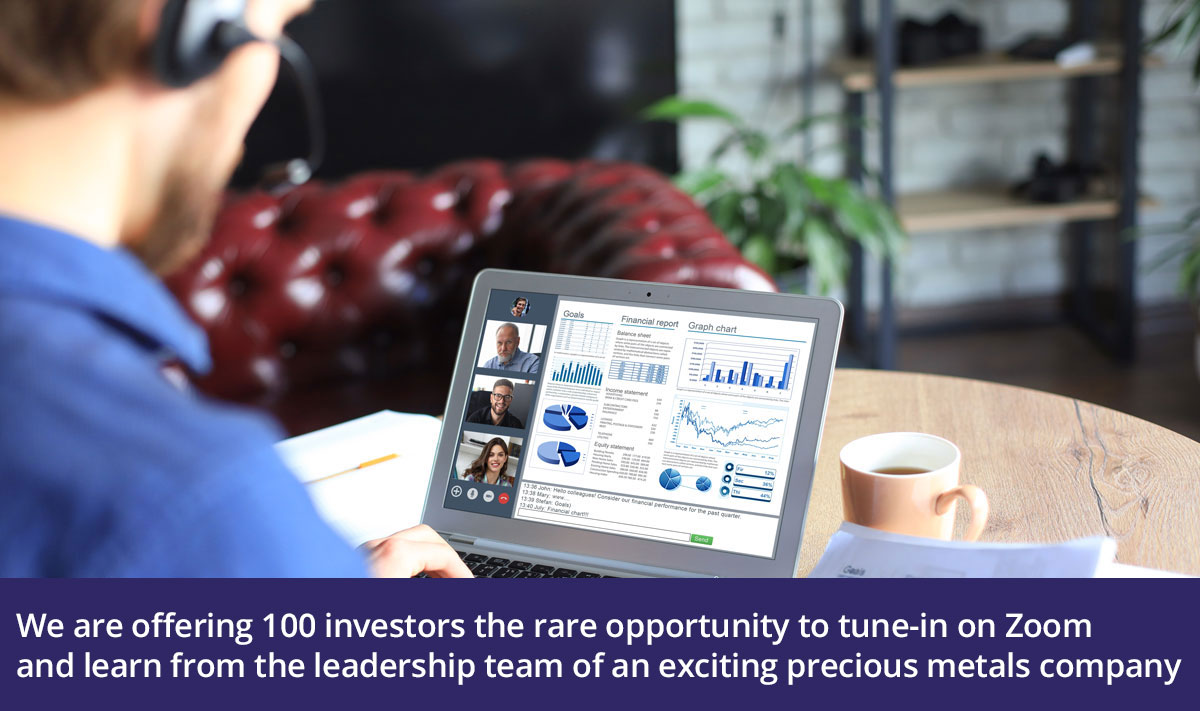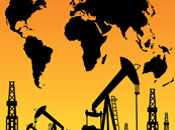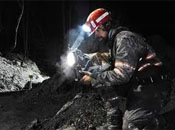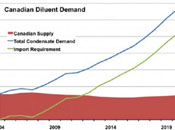It's been a big week for natural gas, which means one thing: big opportunity for you!
Two telling reports have dropped out of the stork's mouth and landed on your editor's desk.
Both have to do with the future of natural gas. And both also lead to an all-but-guaranteed way to profit from the cheap and abundant fuel source…
If you've been looking for a 5-year price forecast in natural gas – you'll want to take note of the Energy Information Administration's 2013 Annual Energy Outlook (early-release.)
"With increasing natural gas production, reflecting continued success in tapping the nation's extensive shale gas resource, Henry Hub spot natural gas prices remain below $4 per million Btu (2011 dollars) through 2018" the report portends.
From my perch this seems to be the most realistic estimate for prices ($3-5 in the next 5 years) – especially considering we've barely scratched the surface of our natural gas riches. Take a look at it in chart form:

And if crude prices remain resilient, which I believe they will (anywhere from $75-100), we can expect to see continued downward pressure on natural gas prices. The reason is simple, this from the EIA:
"The resilience of drilling activity, despite low natural gas prices, is in part a result of high crude oil prices, which significantly improve the economics of natural gas plays that have relatively high liquids content (crude oil, lease condensates, and natural gas liquids). Also contributing to growing production volumes are improved drilling efficiencies, which result in a greater number of wells being drilled more quickly, with fewer rigs and higher initial production rates."
It's good to see that most of the major research outfits are giving credence to the abundance of America's shale gas. That said, cheap natural gas looks to be in our future for at least the next 5 years.
And brings us to the second important report of the week…
According to a report from the National Economic Research Associates (NERA) the U.S. would enjoy a "net benefit" from exporting natural gas.
This government-commissioned report is a ground shifter, and will likely lead president Obama to OK liquefied natural gas (LNG) exports in the coming year.
Is it the right call? You can be the judge of that, but here are a few points to consider…
Although tons of money, effort and smarts go into producing a comprehensive write-up (the NERA report for instance is over 215 pages!), just a few wrong variables or incorrect assumptions can kill the whole thing. I like to think of it as tilting a moon-rocket a few inches off its launch pad – all of a sudden there's plenty of momentum heading in the wrong direction.
I'm sure that plenty of the number crunching for this government-summoned report is correct – but there are a few assumptions I'm worried about. Without crunching a single number, let's walk through this process…
We have two options: we can export or not export.
If we export, the assumptions are pretty simple. Processing and export facilities build up over the next few years and begin exporting product via LNG ship to foreign markets. With the price differential between, say, Asia's natural gas prices and ours, there's plenty of money to be made. And yes, this is undoubtedly good for the U.S. economy.
But is it necessarily better? There's the rub…
If we choose not to export – and force a gas glut to remain onshore in the U.S. – there are countless variables and assumptions that could be made. This is where the NERA report falls short.
First off, in simple terms, the net benefit from exporting raw natural gas can NOT be better than exporting a value-added product (such as chemicals, fertilizers, and other goods that require natural gas as a feedstock.)
All else held equal a value-added product will create more jobs and more wealth in this country than simply exporting the raw material. Think of the net benefits of exporting, say, handmade wooden chairs as opposed to the raw lumber.
Geez, for an example of this, just look to China's raw material policy. China knows well that a raw material is worth a lot more if you can turn it into a sellable product. Why export rare earth metals when you could start building a technology sector of your own, right?
In that light, I'd much rather see the U.S. become a stronghold for natural gas-based, value-added products.
Or you can look at it this way…
"We'll be the dumbest people in town if we ship clean natgas and import oil" I recall T. Boone Pickens saying last year at a shale conference. Pickens' point is simple: why ship something that we know we have in abundance, is relatively cheap, efficient and burns clean. Instead he believes we should be using more of it here at home – replacing coal use, building out American manufacturing, adding it to the vehicle fuel mix and more.
Indeed, you can see which way I'm leaning in this export argument, but there are a lot of arguments either way.
For today, let's not get weighed down with the details. Instead, let's find the best way to play it – regardless of the outcome!
Export, Or No – Here's How To Play It…
No matter which faction wins the export debate, there is a clear investment winner.
Regardless of where the natural gas goes, the companies that can transport and process it stand to make a killing – no matter what the price! Indeed, there's still plenty of time to look at you favorite pipeline plays.
"It's just like the real estate business, you want to put your store on a busy corner," says Kevin McCarthy, the highly-regarded fund manager of Kayne Anderson Midstream/Energy Fund (KMF).
"You want to have a pipeline or a processing facility" he continues, "in an area where you think there's going to be multiple opportunities to grow."
McCarthy's fund, which invests in a lot of the big name midstream players is up 23% year over year – yep, it's clear that he knows a thing or two about the pipeline and midstream biz. [Editor's note: For a quick look behind the curtain, McCarthy's fund holds a lot of household midstream names, including: Williams (WPZ), Kinder Morgan (KMP), Enbridge (EEP), Golar (GLNG) – plus a company we've covered here, Dcp Midstream (DPM)]
McCarthy, along with your editor, is banking on a multi-decade boom (and buildout) in America's shale gas patch. As companies jockey for part of the action there will surely be winners in this sector…
As an investor, if you're investing in the sweet-spot of this market (whether it be moving natural gas inland to a processing facility or seaward towards an export facility), you can make a killing from the consistent, natural gas-based dividends that these firms payout.
An easy way to pick up some of the best players would be to invest directly in McCarthy's fund, Kayne Anderson Midstream Energy (KMF.) It's a shotgun approach to be sure, but so far McCarthy has proven his marksmanship.
Share price has pulled back from October highs and right now the dividend yield is listed over 6%. Not bad, right?
If you'd like to ride the coat-tails of one prolific midstream player, McCarthy is a great choice. Any continued pullback in share price (with fiscal calamity on our radar) and this company is a buy.
Keep your boots muddy,
Matt Insley
The Daily Reckoning























































